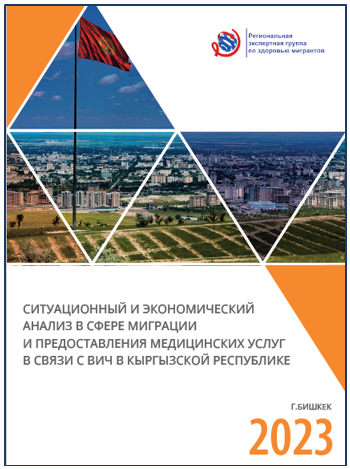WHO considers migration as a risk factor for health, that may depend on the type of migration, the living conditions, as well as on the access to medical care at their places of origin, transit and destination. Migration from Kyrgyzstan is predominantly spontaneous and informal. According to official data, about 720 thousand citizens of Kyrgyzstan are in labor migration, but according to some national and international experts, this number could as twice as larger. All gender, age, professional, social, and regional groups of the population are involved in migration.
A significant volume of migration limits patients’ access to HIV services. In countries where the main flows of external migrants are sent, there are significant restrictions in obtaining medical care for foreign citizens with HIV.
From 1996 to 2023, the number of HIV among labor migrants has been growing. Until 2003, few cases were recorded, since 2014 the frequency has increased significantly. In 2022, the highest number of HIV cases among labor migrants was registered. According to the latest data from the Electronic HIV Case Tracking System, 18% of registered PLHIV had experience of labor migration.
The described situation creates certain challenges for providing HIV-positive migrants with high-quality and uninterrupted treatment, which, in turn, determines the need to identify existing barriers in access to prevention and treatment and develop effective recommendations to address these identified barriers.
At the moment, the publication is available in Russian, soon, a version in the Kyrgyz language will also be available at this website.
A significant volume of migration limits patients’ access to HIV services. In countries where the main flows of external migrants are sent, there are significant restrictions in obtaining medical care for foreign citizens with HIV.
From 1996 to 2023, the number of HIV among labor migrants has been growing. Until 2003, few cases were recorded, since 2014 the frequency has increased significantly. In 2022, the highest number of HIV cases among labor migrants was registered. According to the latest data from the Electronic HIV Case Tracking System, 18% of registered PLHIV had experience of labor migration.
The described situation creates certain challenges for providing HIV-positive migrants with high-quality and uninterrupted treatment, which, in turn, determines the need to identify existing barriers in access to prevention and treatment and develop effective recommendations to address these identified barriers.
At the moment, the publication is available in Russian, soon, a version in the Kyrgyz language will also be available at this website.
